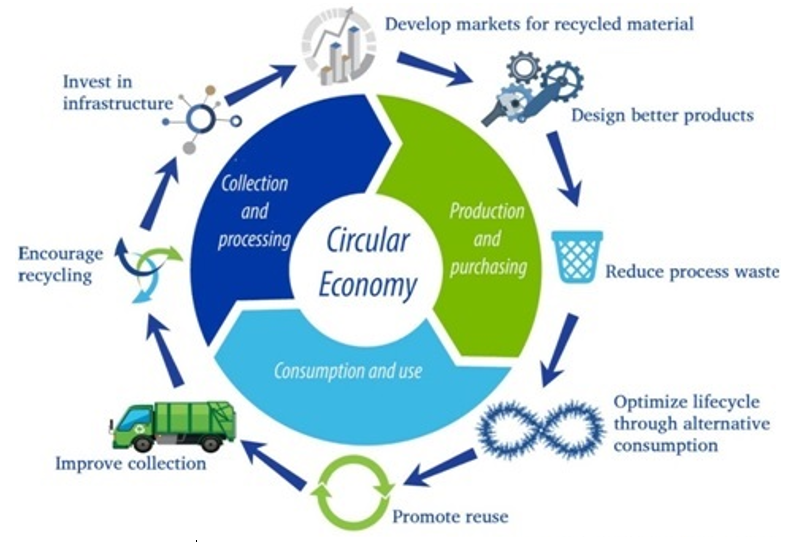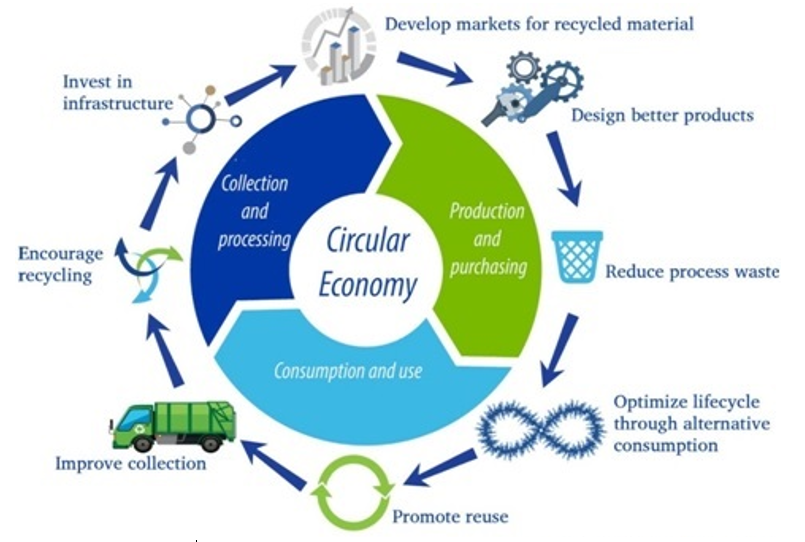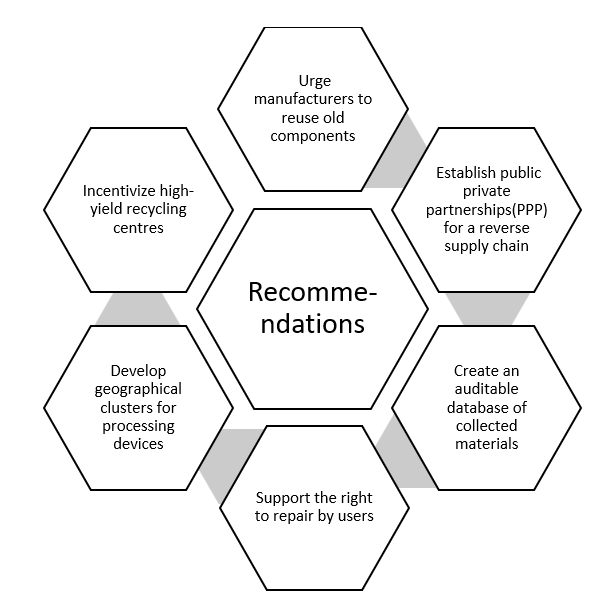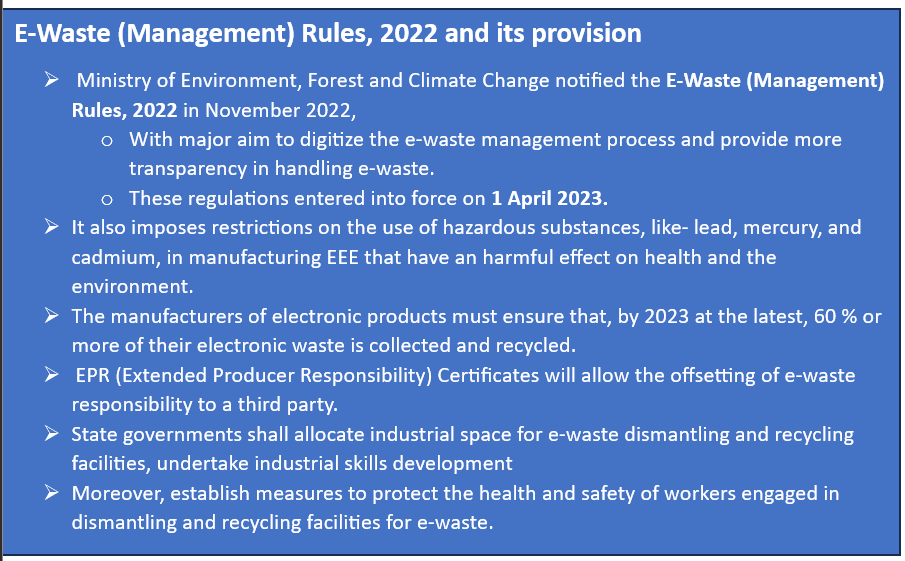- Courses
- GS Full Course 1 Year
- GS Full Course 2 Year
- GS Full Course 3 Year
- GS Full Course Till Selection
- Online Program
- GS Recorded Course
- NCERT (Recorded 500+ Hours)
- Polity Recorded Course
- Geography Recorded Course
- Economy Recorded Course
- AMAC Recorded Course
- Modern India, Post Independence & World History
- Environment Recoded Course
- Governance Recoded Course
- Science & Tech. Recoded Course
- International Relations and Internal Security Recorded Course
- Disaster Management Module Course
- Ethics Recoded Course
- Essay Recoded Course
- Current Affairs Recoded Course
- CSAT
- 5 LAYERED ARJUNA Mentorship
- Public Administration Optional
- ABOUT US
- OUR TOPPERS
- TEST SERIES
- FREE STUDY MATERIAL
- VIDEOS
- CONTACT US
Circular Economy and E-waste
Circular Economy and E-waste
12-09-2023

Latest Context
- On 28 August, 2023 Indian Cellular and Electronics Association (ICEA) released a report titled ‘Pathways to Circular Economy in Indian Electronics Sector’.
- The report was developed with the aim of examining ways to harness electronic waste and create a circular economy for India's electronics industry
- This report, is developed in collaboration with NITI Ayog.

Key findings
- As in the case of recycling ,E-waste management is largely informal in India.
- According to ICEA report, a very competitive informal sector manages around 90% of waste collection and 70% of recycling.
- UN’s Global E-waste Monitor 2020, India is the third largest electronic waste generator in the world after China and U.S.A.
- Report says, the level of e-waste is expected to grow due to cheaper phones and increased usage.
- It is noteworthy that, the informal sector excels at salvaging older devices for parts and profiting from repairs with them.
- Then there are industrial hubs such as Moradabad, where printed circuit boards (PCBs) arrive in tonnes to be melted into gold and silver that can then be sold.
- PCB, also called printed wiring board (PWB), is a medium used to connect or "wire" components to one another in a circuit.
- The report emphasises the urgent need for a new e-waste management and looks at opportunities to exploit its potential.
- The report suggests that an additional USD 7 billion of market opportunities could be unlocked by this transformation.
Circular economy
- The circular economy aims to bring used and damaged electronic products back into the electronics ecosystem.
- There are several basic and valuable metals in E-waste, e.g. gold, silver, copper, nickel or palladium.

- The report calls for a shift in the focus on e-waste management to creating a circular economy.
- An example of this circular economy approach is China, which has committed to using 35% of primary raw materials in the production of new products by 2030.
What can we do to recycle the e-waste?


Conclusion
In view of the unpredictable supply chain for electronics components and the need to take full advantage of their intrinsic value in a formalized and reliable way, it is important to make efforts towards developing a circular economy for electronic waste.
Must Check: Best IAS Coaching In Delhi



